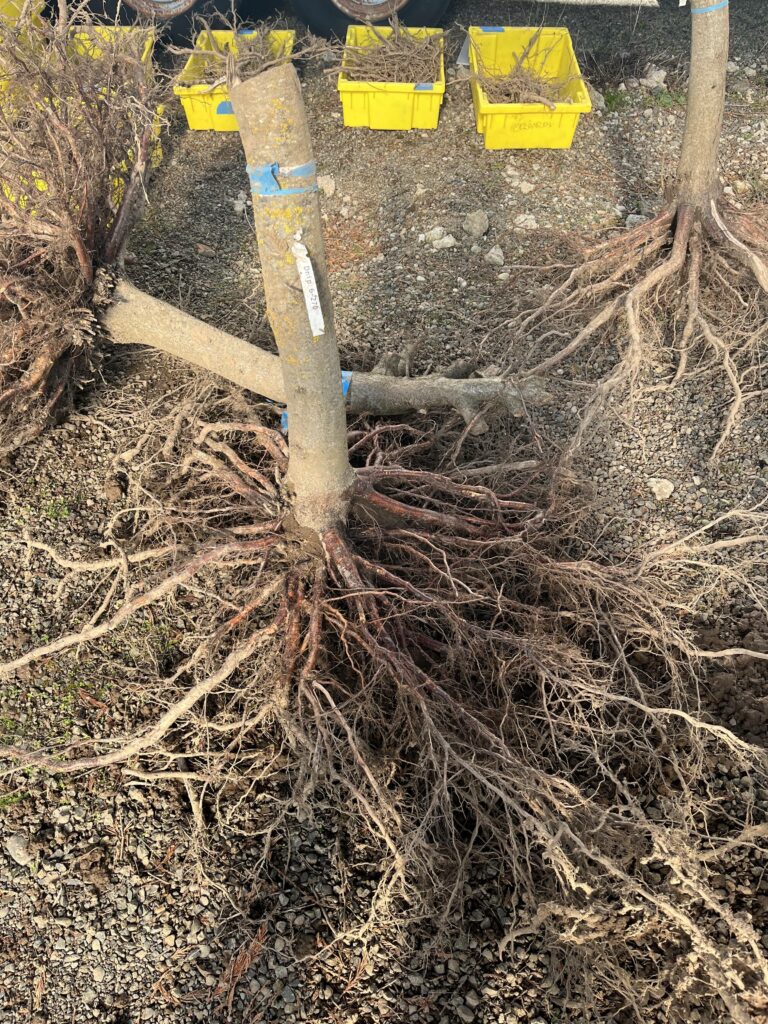Last week the digging and removal of these ‘Jefferson’ trees marked the beginning of the end of a long experiment. Back in April of 2019, we applied some very expensive urea fertilizer around the drip line of theses trees. The cost at that time was not due to supply chain issues, but because we applied 10% 15N urea, a special urea containing the stable isotopic form of nitrogen.
Isotopic 15N is rare in nature and has a higher atomic mass (due to an extra neutron) from the more abundant form of N. Isotopic 15N can act just like regular N as a nutrient in plants and animals, but it can be detected in laboratories that specialize in isotopic analyses. This allows researchers to use the 15N as a tracer. When applied as fertilizer, we can follow to movement of 15N into the plant. This can be used to better understand uptake of N and subsequent partitioning of N to different parts of the tree over time because we know when and where and how much 15N was applied.
In our research, we wanted to determine how the uptake of the isotopic 15N urea would be affected by irrigation, and where the N would move once it was in the trees. Irrigation did have a major influence on uptake and we were surprised to find that the soil-applied isotopic N made it into tissues such as leaves, shoots, nuts and catkins within a year. We are currently working on final analysis and publication of the study results. One major task remains- destructively harvesting the trees.
Destructive harvest is necessary because for most tissues we only know the percentage of N and percentage of isotopic 15N. Now, in order to determine how much N is stored in the trunk for example, we need to determine how much biomass different tree structures contain. So now we need to break down the trees into different parts such as trunk, roots, young branches, scaffold branches etc.
Did you know a 6-year-old tree can more than 3 lbs of catkins?
Thanks to the Oregon Department of Agriculture Fertilizer Program for supporting our study.






Interesting stuff – excited to see results!